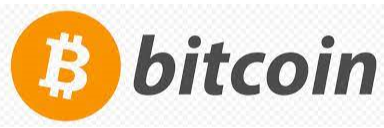Best Cryptocurrencies in 2025: A Review of What’s Hot and What’s Not
By Jordan Blake
January 5, 2025 • Fact checked by Dumb Little Man
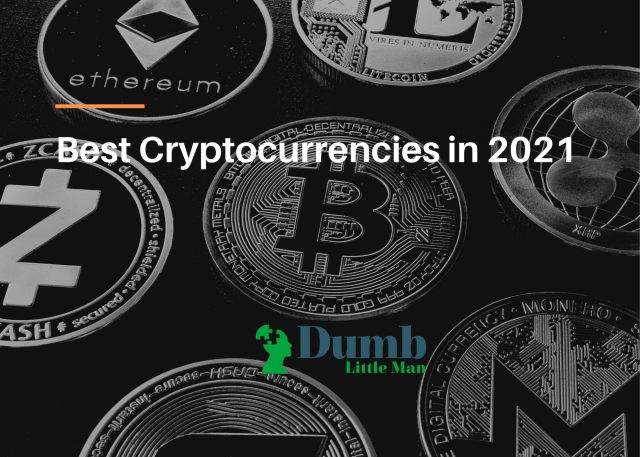
Want to jump straight to the answer? The best cryptocurrency brokers for traders are Coinbase and Gemini
The #1 Forex Trading Course is Asia Forex Mentor
Have you heard about cryptocurrencies before? The cryptocurrency network advised by the securities and exchange commission offers the best digital currencies options. These digital assets include Bitcoin that's the fantastic cryptocurrency market along with other cryptocurrencies.
These fiat currencies offer effective cryptocurrency prices and digital money options for most investors. These real currencies include particular stocks and financial products with personal circumstances to provide decentralized apps and unbiased information with widely considered interactive tools and brokerage services for better liquidity.
Cryptocurrencies are designed to offer government manipulation and comparisons services with financial decisions and independent research. Whether you want to buy cryptocurrencies or do any cross-border transactions will offer exclusive future performance. Our editorial disclosure includes different crypto exchanges reviews and more with the best investment advice.
Best Cryptocurrencies in 2025:
| Cryptocurrency | Best For |
|---|---|
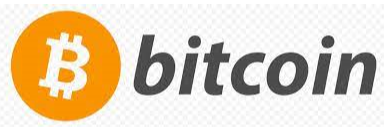 | Best Store Value Cryptocurrency Read Review |
Holds the Most Market Enthusiasm | |
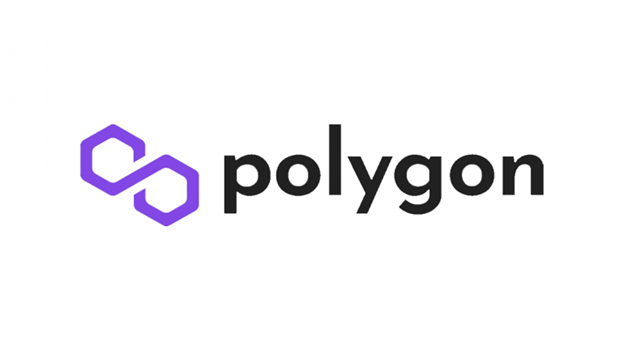 | Most Promising Layer 2 Token Read Review |
 | Best Decentralize Application Read Review |
 | Best Hedge Against ETH Read Review |
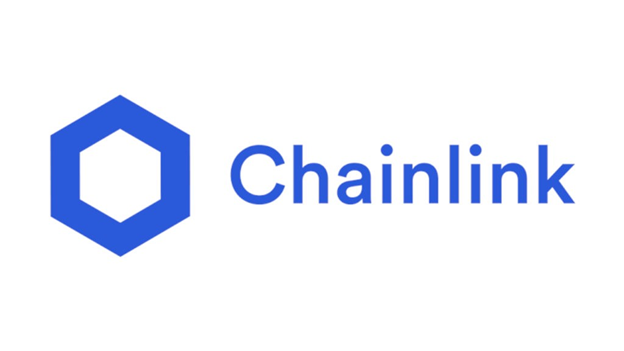 | Highest Growth Potential Read Review |
6 Best Cryptocurrencies
#1. Best store of value cryptocurrency: Bitcoin (BTC)

Not only is Bitcoin the first cryptocurrency, but it's also the best known of the more than 5,000 cryptocurrencies in existence today. Financial media eagerly covers each new dramatic high and stomach-churning decline, making Bitcoin an inescapable part of the landscape. Let's take a closer look at how Bitcoin works.
Every Bitcoin transaction ever been made exists on a public ledger accessible to everyone, making transactions hard to reverse and difficult to fake. That's by design: Core to their decentralized nature, Bitcoins aren't backed by the government or any issuing institution, and there's nothing to guarantee their value besides the proof baked in the heart of the system.
Bitcoin is powered by open-source code known as the blockchain, which creates a shared public ledger of transactions organized into “blocks” that are “chained” together to prevent tampering. This technology creates a permanent record of each transaction, and it is at the heart of more than 10,000 cryptocurrencies that have followed in bitcoin's wake.
#2. Holds the most market enthusiasm: Ethereum (ETH)

Ethereum is often referred to as the second most popular cryptocurrency, after Bitcoin. Ethereum is intended to be much more than simply a medium of exchange or a store of value. Instead, Ethereum calls itself a decentralized computing network built on blockchain technology. Ethereum works based on a blockchain network.
A blockchain is a decentralized, distributed public ledger where all transactions are verified and recorded. The Ethereum network can also be used to store data and run decentralized applications. Rather than hosting software on a server owned and operated by Google or Amazon, where the one company controls the data, people can host applications on the Ethereum blockchain.
This gives users control over their data, and they have open use of the app as there's no central authority managing everything. Besides being used as a digital currency, Ethereum can also process other types of financial transactions, execute smart contracts and store data for third-party applications.
#3. Most promising layer 2 token: Polygon (MATIC)

Think of Polygon crypto as an express train. It is on the same track as all other trains but moves faster and makes fewer stops along the way. In this example, the track is Ethereum, where Polygon fulfills transactions quicker than other currencies.
The platform uses a POS or proof-of-stake consensus to secure the network and create a new currency. As for Coinbase, Polygon has a market cap of $9.1 billion, and there are 6.7 billion MATIC in circulating supply. Polygon only supports Ethereum as the base chain but plans on extending its support to other base chains, according to the community consensus and suggestions.
The network describes itself as a Layer 2 scaling solution. Its unique transaction fulfillment technology allows up to $65,536 transactions on each block. Meanwhile, Polygon's side chains have been designed to support decentralized finance protocols of the Ethereum ecosystem.
#4. Best decentralized application: Sushi (SUSHI)

SUSHI is a governance token that's used on the SushiSwap decentralized exchange (DEX). One of the attractive features of SUSHI and other DEX tokens is that you can make them work for you. For example, investors can stake SUSHI — at writing, the APR is 3.46%, but it varies from day to day. Staking ties up your coins, and you get paid a percentage of the transaction fees in return.
SUSHI is not the only DEX token on the market, and it is hard to see which one (if any) will come out on top. Each DEX offers different features, different ways to earn interest, and different interest rates. That said, just as there are several centralized cryptocurrency exchanges, there's no reason to think there's only room for one DEX.
SushiSwap fees are more affordable than centralized exchanges like Coinbase. Specifically, SushiSwap users pay a 0.3% fee when they join a liquidity pool. There is also a small transaction fee only paid once when you approve a new token's pool. The community governance mechanism employed by SushiSwap provides users with a chance to vote on all vital upgrades and protocol changes.
#5. Best hedge against ETH: Cardano (ADA)
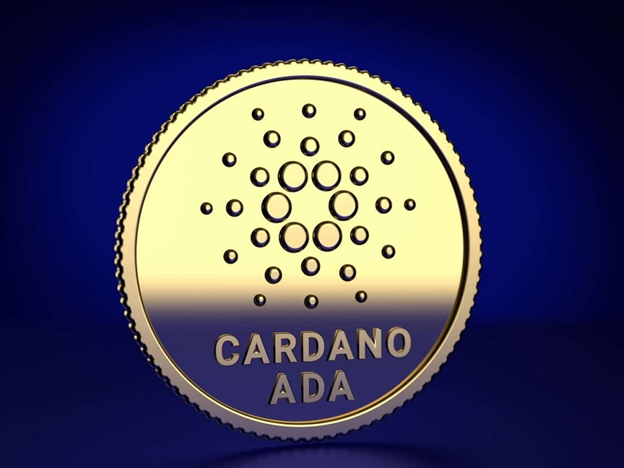
Cardano is an open-source and decentralized blockchain project created to facilitate peer-to-peer transactions. It has a layered architecture that facilitates smart contracts, enabling a platform that is both adaptive and scalable without compromising security. Cardano (ADA) is often referred to as a third-generation cryptocurrency.
It builds on what Bitcoin and Ethereum have done while aiming to be more sustainable and scalable. That means it's much more environmentally friendly, faster, and more secure. Cardano hasn't gotten much mainstream attention yet, and it's considered one of the altcoins to watch. Cardano uses a different system, called proof of stake, to verify transactions.
Cardano's layered blockchain architecture comprises two main elements, the Cardano Settlement Layer (CSL) and the Cardano Computational Layer (CCL), which makes Cardano truly unique. Most other existing blockchain platforms only function with a single layer, which often causes network congestion, slows transactions, and drives fees higher.
#6. Highest growth potential: Chainlink (LINK)
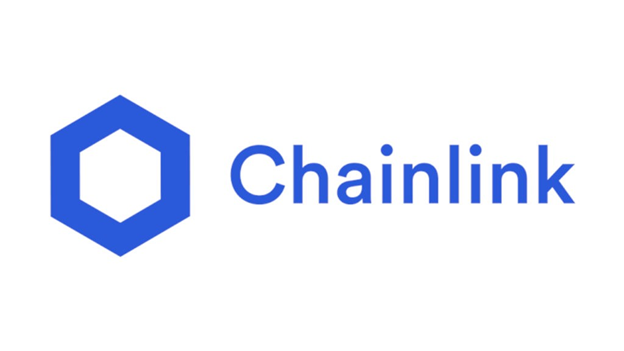
Another option on our list is the decentralized platform that links contracts to external data within the crypto space. Whenever the decentralized applications get compromised, the Chainlink offers a secure wall to prevent malicious attacks. Moreover, the platform involves the value whenever the blockchain will get the data.
There the data also gets prone to different attacks making it different for real estate investors. This cryptocurrency exchange implements a complete network of nodes while ensuring the information necessary for smart contracts making them reliable and secure. That's because any smart contract requires real-world data to register the need and chainlink nodes network for bidding on the request.
Chainlink is purposely developed to ensure that all outputs and inputs are tamper-proof from decentralized data layers and logic. It implies that smart contracts are made as well as controlled easily.
Best Cryptocurrency Exchanges
| Broker | Best For | More Details |
|---|---|---|
| New Investors Read Review | securely through Gemini website | |
| Earning Rewards Read Review | securely through Coinbase website | |
 | Altcoin Trading Read Review | securely through Binance website |
 | Sign Up Bonuses Read Review | securely through Crypto.com website |
#1. Gemini
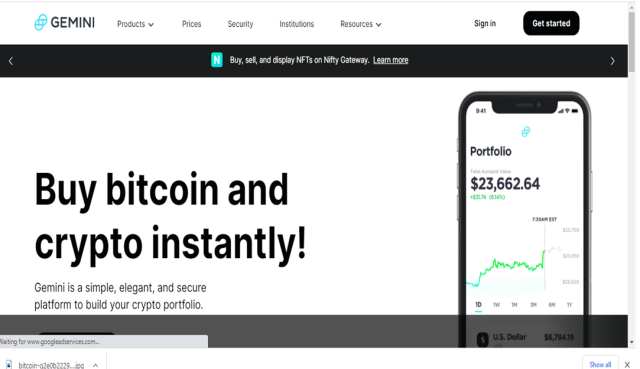
Most original cryptocurrency exchanges are accessible in select states, though Gemini can be accessible to the residents in about 50 countries. Gemini has an easy interface for new crypto investors, and many successful investors appreciate the ActiveTrader platform from Gemini.
Some exchanges you can find charge minimum fees on crypto trades, though Gemini measures insurance against breaches committed online. Therefore, the people who are new to cryptocurrency trading minds are put at ease.
There is an edge in the competition in the withdrawal charges. With many brokerages, crypto withdrawal by a platform suffers a network cost, though Gemini allows you ten withdraws on all crypto every month for free.
| Broker | Best For | More Details |
|---|---|---|
 |
| securely through Gemini website |
#2. Coinbase
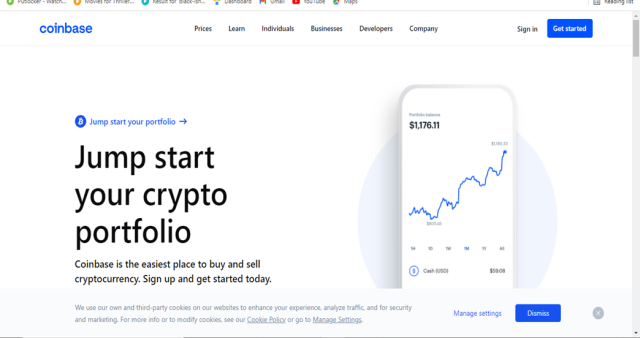
Coinbase is an investing and trading platform that allows users to sell, exchange, and buy more than 100 tradeable cryptocurrencies. It is a massive company with more than users of 73 million and 255 billion dollars assets over the platform.
The central Coinbase mobile app and website are used efficiently, and you can quickly exchange, sell, or buy cryptocurrencies. Right now, it is supporting more than 100 currencies to trade as well as this number is regularly growing.
On an eligible balance, you can earn interest, and you can also make a small number of new currencies by Coinbase Earn. Users can also switch to the Coinbase Pro; this is an active trading platform with low charges and many features. Coinbase has industry-leading security practices that keep clients' assets and deposits safe.
| Broker | Best For | More Details |
|---|---|---|
 |
| securely through Coinbase website |
#3. Binance
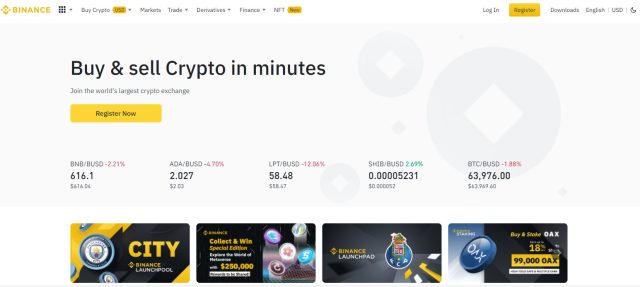
There are over 50 types of coins on Binance available for you to trade. So with Binance, traders can sell coins such as Ethereum, bitcoin, or any other. In the past, Binance was referred to as a partner of the U.S. Although, because of inspection of the international Binance was not able to extend Binance U.S.
For instance, it was announced, Binance can no longer authorize operation in-country by Italian regulators. The exchange does not provide phone numbers for customer queries. This fact makes it a little less responsive than other exchanges; while their online support is quick, it can be bogged during demanding periods.
You can download the Binance mobile app for IOS or Android. Both the apps give you access to many platform features; this includes Binance futures, fiat gateway, margin trading, P2P trading, Binance options, spot trading, and many more. Binance only includes trading pairs of crypto-to-crypto exchange; all withdrawals and deposits involve external crypto wallets and moving funds.
| Broker | Best For | More Details |
|---|---|---|
 |
| securely through Binance website |
#4. Crypto.com

It is one of the prominent crypto exchanges and the support for many products related to blockchain and crypto-assets. Users can trade, sell and buy an extensive list of currencies and enjoy relatively fewer investing charges.
It is an excellent option for those looking to hold and buy currencies such as Ethereum and other well-known currencies. Charges are limited to about 0.40 percent and big trading volume and significant holdings of CRO currency.
The app allows you to view lists of assets and portfolios quickly. The other options included in the Crypto.com app are currency trading, earning by crypto skating, signing for a credit card by Crypto.com, and payments can be made with crypto.
| Broker | Best For | More Details |
|---|---|---|
 |
| securely through Crypto.com website |
Cryptocurrencies Pros and Cons
Let's consider the pros and cons in detail!
Pros
- No scam or fraud while using cryptocurrencies
- No personal information leakage
- It has high potential for returns
- Secured ownership transfer
Cons
- Some people might Illegal Activities
- Loss Risk is really high
Features to look for in Good Cryptocurrencies?
Presently, there are around 6000 distinct types of cryptocurrencies in use. It might be difficult for someone new to bitcoin to figure out which coins are the best to invest in. But, much like people, cryptocurrencies have characteristics that distinguish the excellent from the bad.
Security
You should choose your cryptocurrency with your economic stability in mind. The perfect cryptocurrency will be designed with security in mind. This implies that, in addition to 2-factor authentication and complicated passwords, it will include built-in security safeguards to protect it from being hacked.
While you don't need to go into great detail about the technical elements of your cryptocurrency, you should conduct some preliminary study to verify that it has certain security protections in place to prevent it from being attacked by depends on the effectiveness.
Stability
In the world of cryptocurrencies, pursuing stability might sound like an oxymoron. And besides, a cryptocurrency will only be really stable if individuals, companies, and nations want to utilize it, which appears to be a long way off.
That isn't to say that cryptocurrencies like Bitcoin and Ether aren't secure. The optimal cryptocurrency achieves stability over time as the number of transactions executed in that currency increases, as both of these cryptos have done. Investing in cryptocurrencies that match this concept is a smart move.
Scalability
The amount of transactions that can be handled or confirmed per second is referred to as bitcoin scalability. Because of the time difference in transaction timeframes, we now prefer paying online over depositing a check.
To settle transactions, blockchains employ a variety of mechanisms, the finest of which are also the fastest. Look for forums that address this issue and choose coins that complete transactions in the least amount of time.
Supply
The biggest disadvantage of normal or fiat currency is that it may be printed in unlimited quantities. Some have already raised concerns about an impending debt crisis as a result of the cheap money issued to keep economies afloat during the Covid-19 lockdowns.
Cryptocurrencies, on the other hand, can avoid the supply problem. In reality, most have a set number of coins that will never be produced. Bitcoin, for example, may only have a maximum of 21 million coins in circulation.
Decentralization
The fundamental point of bitcoin is to give individuals authority rather than a holding company. Despite attempts to identify Satoshi Nakamoto, one of the distinguishing characteristics of Bitcoin is that no one knows who invented it.
Some cryptocurrencies, on the other hand, attempt to manipulate their value by using the block chain’s decentralized structure. If you ever learn the identity of the persons or organization behind a cryptocurrency, sell everything immediately away. Remember how the Squid Game fraud worked out, even though it isn't exactly connected.
Demand
This one is quite straightforward. Choose a cryptocurrency that is in high demand. By demand, we mean that the cryptocurrency is making headlines and has the potential to expand in popularity over time as a result of word-of-mouth and other factors like as media attention, availability on exchanges like WazirX, and so on. The theory is that the sooner you invest in a cryptocurrency, the more valuable it becomes as more people learn about it.
Case in Point
One essential component of cryptocurrencies is how they can be used in the same manner that cash can be used to buy and trade goods and services. This is an area that few people consider when purchasing cryptos, but having the opportunity to purchase something good with your crypto is really a fairly exciting proposition.
You can pick up NFTs with Ether, for example, and open up a whole new universe of possibilities. This is preferable to merely purchasing a cryptocurrency and holding it until it becomes valued enough to sell at a profit. Basically, think of cryptocurrencies as a tool for what they can accomplish for you rather than just a mechanism to acquire and sell at the proper price.
Choose Asia Forex Mentor for Your Forex and Crypto Trading Success
If you have a keen interest in establishing a successful career in forex trading and aspire to achieve substantial financial gains, Asia Forex Mentor stands as the optimal choice for the best forex, stock, and crypto trading course. Ezekiel Chew, renowned as the visionary behind trading institutions and banks, is the driving force behind Asia Forex Mentor. On a personal note, Ezekiel consistently achieves seven-figure trades, a distinction that truly sets him apart from other educators in the field. Here are the compelling reasons that underpin our recommendation:
Comprehensive Curriculum: Asia Forex Mentor offers an all-encompassing educational program that covers stock, crypto, and forex trading. This well-structured curriculum equips aspiring traders with the knowledge and skills necessary to excel in these diverse markets.
Proven Track Record: The credibility of Asia Forex Mentor is firmly established through its impressive track record of producing consistently profitable traders across various market sectors. This achievement serves as a testament to the effectiveness of their training methodologies and mentorship.
Expert Mentors: At Asia Forex Mentor, students benefit from the guidance and insights of experienced mentors who have demonstrated remarkable success in stock, crypto, and forex trading. These mentors provide personalized support, enabling students to navigate the intricacies of each market with confidence.
Supportive Community: Joining Asia Forex Mentor brings access to a supportive community of like-minded traders pursuing success in the stock, crypto, and forex markets. This community fosters collaboration, idea-sharing, and peer learning, enhancing the overall learning experience.
Emphasis on Discipline and Psychology: Success in trading necessitates a strong mindset and disciplined approach. Asia Forex Mentor provides crucial psychological training to help traders manage emotions, handle stress, and make rational decisions during trading.
Constant Updates and Resources: The financial markets are dynamic, and Asia Forex Mentor ensures that students remain up-to-date with the latest trends, strategies, and market insights. Continuous access to valuable resources keeps traders ahead of the curve.
Success Stories: Asia Forex Mentor takes pride in a multitude of success stories where students have transformed their trading careers and achieved financial independence through their comprehensive forex, stock, and crypto trading education.
In summary, Asia Forex Mentor emerges as the premier choice for those seeking the best forex, stock, and crypto trading course to carve a rewarding career and achieve financial prosperity. Through its comprehensive curriculum, experienced mentors, practical approach, and supportive community, Asia Forex Mentor provides the necessary tools and guidance to mold aspiring traders into accomplished professionals across diverse financial markets.
RECOMMENDED TRADING COURSE | REVIEW | VISIT |
#1 Forex, Crypto and Stocks trading course. Ranked most comprehensive by Investopedia and Best by Benzinga. Free to Try! |
Conclusion: Best Cryptocurrencies in 2025
Cryptocurrency is not one of the fiat currencies but a currency, which exists in a digital form. This cryptocurrency helps pay purchases made online with not going through intermediaries like banks and holding investments. You can also invest in many cryptocurrencies; they are different from traditional assets such as stocks.
Cryptocurrencies are primarily made to get freed from government control and manipulation, though as they are trendy, the foundational aspects of the industry come under fire. Every cryptocurrency intends to be used as transmitting value, payments across decentralized networks.
Bitcoin is our top choice within most cryptocurrencies that help lose money and help users get the maximum advantage. The comparison service can be purchased as a binance coin bnb or others as the bitcoin's price differs every day.
Best Online Brokers for Bonds FAQs
What is Market Capitalization?
The entire dollar market value of a company's outstanding shares of stock is referred to as market capitalization. It is computed by multiplying the entire number of a company's outstanding shares by the current market price of one share, which is commonly referred to as “market cap.”
The stock market determines how much a firm is worth, which is referred to as market capitalization. The entire market value of all outstanding shares is what it's called. The market cap may be a useful statistic in choosing which stocks you are interested in and how to diversify your portfolio with firms of various sizes due to its simplicity and efficacy for risk assessment.
What is a good market cap?
Companies having a market value of $3 billion to $10 billion are often well-established in industries that are undergoing or are likely to see substantial development. Market capitalization, or cap, refers to a company's valuation on the open market.
The market capitalization of a corporation reflects its current stage of growth. Large-cap stock investments are often more conservative than small-cap or mid-cap stock investments, perhaps providing less risk in exchange for less aggressive growth potential.
What is decentralized finance?
Decentralized Finance (also known as DeFi) is a blockchain-based type of finance that does not rely on central financial intermediaries like brokerages, exchanges, or banks to provide traditional financial instruments, instead relying on smart contracts on block chains like Ethereum.
Decentralized finance is a growing community of financial legal and regulatory issues based on customizable blockchains like as ethereum and Solana. The transfers are carried out automatically through smart contracts on the blockchain, which also include the plan's agreement.
Jordan Blake
Jordan Blake is a cultural commentator and trending news writer with a flair for connecting viral moments to the bigger social picture. With a background in journalism and media studies, Jordan writes timely, thought-provoking content on everything from internet challenges and influencer scandals to viral activism and Gen Z trends. His tone is witty, observant, and sharp—cutting through the noise to bring readers the “why” behind the “what.” Jordan’s stories often go deeper than headlines, drawing links to pop culture, identity, and digital behavior. He’s contributed to online media hubs and social commentary blogs and occasionally moderates online panels on media literacy. When he’s not chasing the next big trend, Jordan is probably making memes or deep-diving into Reddit threads. He believes today’s trends are tomorrow’s cultural history—and loves helping readers make sense of it all.

